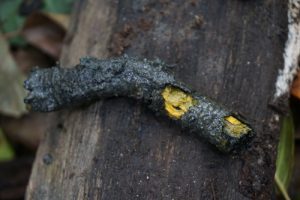 This study investigated As-enriched wetland at the Smolotely-Líšnice Au district (Centra Bohemia) using the combination of geochemical (soil and pore water analyses, S isotopes), mineralogical (microprobe, Raman spectrometry) and biological (DNA extraction) method. In this paper, Magda and her co-authors identified a complex assemblage of As and Fe sulfides (realgar, bonazziite, pyrite, greigite) on the fragments of natural organic matter, which play an active role (very fast microbial sulfate reduction vs. slow transfer of solutes) in arsenic immobilization in polluted wetland systems.
This study investigated As-enriched wetland at the Smolotely-Líšnice Au district (Centra Bohemia) using the combination of geochemical (soil and pore water analyses, S isotopes), mineralogical (microprobe, Raman spectrometry) and biological (DNA extraction) method. In this paper, Magda and her co-authors identified a complex assemblage of As and Fe sulfides (realgar, bonazziite, pyrite, greigite) on the fragments of natural organic matter, which play an active role (very fast microbial sulfate reduction vs. slow transfer of solutes) in arsenic immobilization in polluted wetland systems.
Knappová M., Drahota P., Falteisek L., Culka A., Penížek V., Trubač J., Mihaljevič M., Matoušek T. (2019): Microbial sulfidogenesis of arsenic in naturally contaminated wetland soil. Geochimica et Cosmochimica Acta 267, 33-50. https://doi.org/10.1016/j.gca.2019.09.021






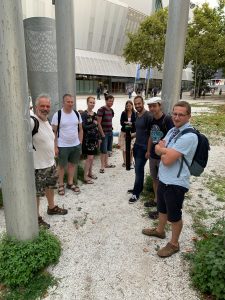 We attended Goldschmidt 2019 conference in Barcelona, Spain. It was a week full of exciting geochemistry!
We attended Goldschmidt 2019 conference in Barcelona, Spain. It was a week full of exciting geochemistry!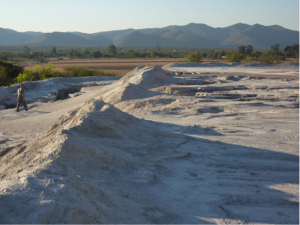 We combined elemental and isotopic studies, leaching techniques and speciation modeling to describe Cu and Pb behavior in contaminated soil profiles of Kombat, Namibia. Tailings, soils and bedrock samples were analyzed. We described pollutants’ behavior in detail for different type of soils and concluded that migration is highly dependent on soil characteristics and element speciation shown by variations, or lack thereof, in concentrations, δ65Cu and 206Pb/207Pb values with depth.
We combined elemental and isotopic studies, leaching techniques and speciation modeling to describe Cu and Pb behavior in contaminated soil profiles of Kombat, Namibia. Tailings, soils and bedrock samples were analyzed. We described pollutants’ behavior in detail for different type of soils and concluded that migration is highly dependent on soil characteristics and element speciation shown by variations, or lack thereof, in concentrations, δ65Cu and 206Pb/207Pb values with depth.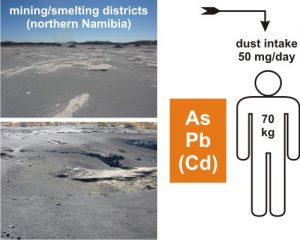 We used a multi-method approach for characterization of dust from mines and smelters in the northern Namibia. In vitro bioaccessibility testing in simulated gastric fluid (SGF) indicated that As, Pb (and also Cd to a lesser extent) exceeded tolerable daily intake limits for these contaminants in the case of slags and smelter dusts, but the exposure risk for local population is only important at the unfenced disposal sites.
We used a multi-method approach for characterization of dust from mines and smelters in the northern Namibia. In vitro bioaccessibility testing in simulated gastric fluid (SGF) indicated that As, Pb (and also Cd to a lesser extent) exceeded tolerable daily intake limits for these contaminants in the case of slags and smelter dusts, but the exposure risk for local population is only important at the unfenced disposal sites.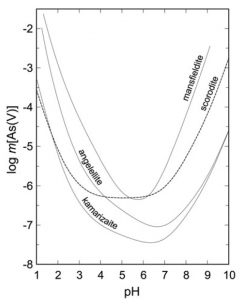 A complete set of new thermodynamic data has been determined for three Al and Fe arsenate minerals: mansfieldite, angelellite and kamarizaite.
A complete set of new thermodynamic data has been determined for three Al and Fe arsenate minerals: mansfieldite, angelellite and kamarizaite.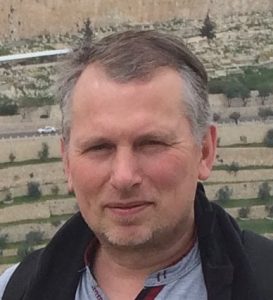 In 2018, Zdeněk Johan Award was awarded to Petr Drahota for his paper: Drahota et al. (2017) Biologically induced formation of realgar deposits in soil, Geochimica et Cosmochimica Acta 218, 237–256. Congratulations!
In 2018, Zdeněk Johan Award was awarded to Petr Drahota for his paper: Drahota et al. (2017) Biologically induced formation of realgar deposits in soil, Geochimica et Cosmochimica Acta 218, 237–256. Congratulations!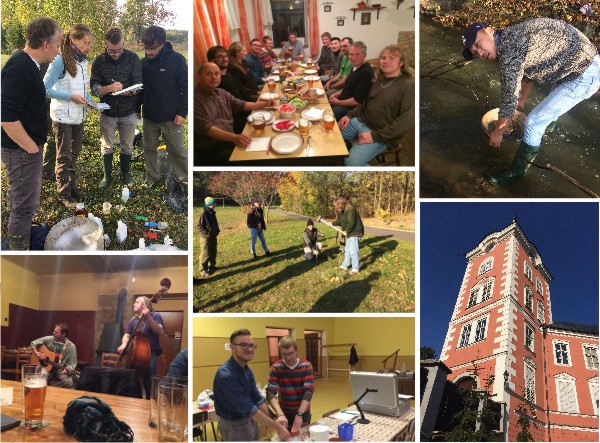
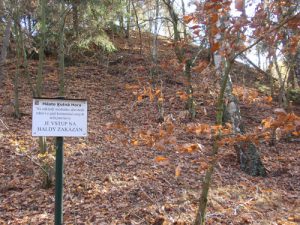 The findings of this study indicated that the historical mining village of Kaňk is highly contaminated by As, Cu, Pb, and Zn, of which As is the most significant contaminant. Despite the high concencentration of As in mining wastes (∼1.15 wt.%), urban soils (∼0.3 wt.%), and road dusts (∼ 440 mg/kg), risk was associated only with mining waste and contaminated soil material via oral exposure (not the inhalation pathway)
The findings of this study indicated that the historical mining village of Kaňk is highly contaminated by As, Cu, Pb, and Zn, of which As is the most significant contaminant. Despite the high concencentration of As in mining wastes (∼1.15 wt.%), urban soils (∼0.3 wt.%), and road dusts (∼ 440 mg/kg), risk was associated only with mining waste and contaminated soil material via oral exposure (not the inhalation pathway)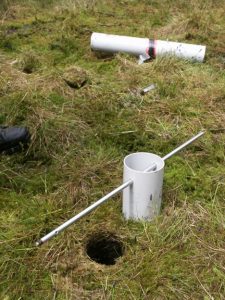 The re-measurement of mercury (Hg) concentrations in archived environmental samples (soils, peats) after several years of storage indicated that there is no statistical difference between new measurements and original data. As a result, archived samples can be used to evaluate historical soil mercury contamination.
The re-measurement of mercury (Hg) concentrations in archived environmental samples (soils, peats) after several years of storage indicated that there is no statistical difference between new measurements and original data. As a result, archived samples can be used to evaluate historical soil mercury contamination. As a part of a special issue of the university journal Forum dedicated to 670th anniversary of Charles University foundation, Jakub Trubač, EGG-member and head of Stable and Radiogenic Isotope Laboratory, was interviewed as a representative of Faculty of Science. He starts with the citation of one of his teachers, Dr. Fratišek V. Holub, who said: “Rocks are the only solid basis of our world”:-) Enjoy the interview on pages 52-53 of the electronic document (
As a part of a special issue of the university journal Forum dedicated to 670th anniversary of Charles University foundation, Jakub Trubač, EGG-member and head of Stable and Radiogenic Isotope Laboratory, was interviewed as a representative of Faculty of Science. He starts with the citation of one of his teachers, Dr. Fratišek V. Holub, who said: “Rocks are the only solid basis of our world”:-) Enjoy the interview on pages 52-53 of the electronic document (